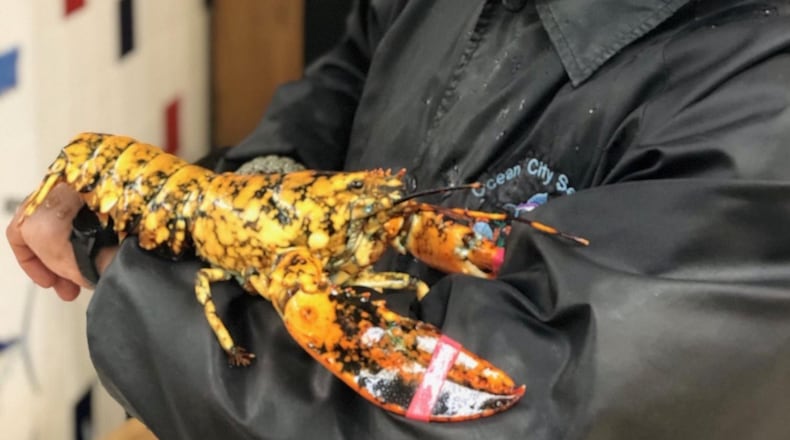Eve was about to become somebody’s dinner.
Fate intervened.
Now the very special "calico" lobster, described as a 1-in-30 million mutation, perhaps could even be coming to the Georgia Aquarium.
The distinctive two-toned crustacean was part of a holiday shipment to Ocean City Seafood in Silver Springs, Maryland, when the owner noticed her unusual color. Instead of the murky browns, greens and blues of the average lobster, this one had a vibrant mottled orange and black shell.
The owner set Eve aside and consulted with experts at the National Aquarium in Baltimore about caring for the rare creature. Now the 1.5-pound Eve lives in a saltwater tank at the market, as the fishmongers decide where she will go for her "forever home."
If she were headed for the steamer, the arthropod would sell for about $14.99 a pound, but she became much more valuable after her story reached the media.
Ocean City spokesperson Rita Montoya said Eve may become a character in a children’s book as well as an attraction at an aquarium. (The New England Aquarium has also offered its facilities.)
"We're still in the very early planning stages of possibly caring for the lobster at the aquarium," Georgia Aquarium spokeswoman Paige Hale told the Baltimore Sun on Saturday.
Ocean City operates a fish market in Silver Spring and sells to restaurants and to the general public. Montoya said the distributor has heard suggestions that they return the lobster to the ocean where she was caught, off the coastline of Maine.
That's what happened to a 23-pound, 100-year-old lobster named King Louie that was offered for sale in 2016 at a New Brunswick, Canada, lobster shop. A Nova Scotia vegan bought the beast, and had him released back in the wild.
But that might not be the best destination for Eve, said Montoya.
Lobsters are bottom dwellers, and their dull colors are meant to blend in with the weed and mud of the ocean floor. Because of her bright markings, Eve would stand out, and become easy picking for such predators as cod, flounder, monkfish eels and crabs, said Montoya.
“Our focus is making sure she she stays alive and is in an environment that is healthy,” said Eve’s protector.
While the natural predators never lose their taste for Homarus americanus, Montoya said her eating habits have changed slightly since Eve was delivered in a shipment of seafood just before Christmas. "I have eaten lobster in my life," she said. "I don't think any one of us has eaten it since then."
About the Author
The Latest
Featured



